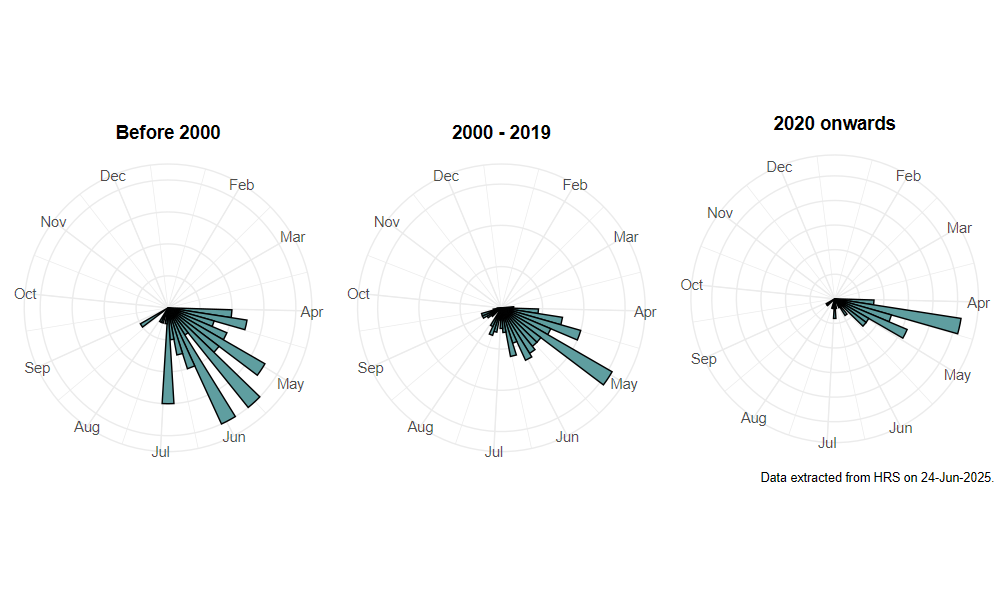Platycheirus splendidus Rotheray, 1998
Identification
Identification difficulty = 4. ![]()
![]() according to Ball & Morris, 20241
according to Ball & Morris, 20241
Synonymy
Sepatayed from Platycheirus scutats by Rotheray (1998)2.
Biology
Bred from larvae collected from leaf-curl galls of Schizoneura ulmi on Wych Elm Ulmus glabra and also Brachycaudus sp. on White Campion Silene dioica. Adults closely resemble P. scutatus with which it was previously confused. Rotheray (1998)2 found that larvae enter diapause (unlike P. scutatus) not forming a puparium until the following spring and the few records of adults available so far support this, suggesting it has a short flight period early in the season.
Flight period
The following plots show the number of unique records per week excluding those reported to be of immature stages.

Distribution
Widely distributed across mainland Britain, including much of Scotland. The patchy distribution suggests that only a proportion of recorders make an effort to separate this species from the commoner P. scutatus.

Trends
The following plots show the Frescalo TFactor vs year and a map of the rescaled frequency (all records) for the species.
